Mr. Terrell booked Louis Armstrong right in the middle of the 1959 Musicals Season to perform for one week, July 7 thru July 12, 1959, He was testing the possibility and audience reaction of booking jazz artists for Monday nights, a night that the theater had traditionally been dark since in inception. Armstrong's appearance was a success, so the following year, 1960, Louis Armstrong and Paul Whiteman were each booked for a full week at the beginning of the season. Then he filled out his Monday nights with jazz greats for the rest of the season.
As the popularity of these concerts grew, 4:00 PM Sunday afternoon concerts, were added to the season schedule. First mostly Folk Singers were booked, but that gradually expanded to Rock and Contemporary/Pop performers.
In 1970, the Music Circus' last year, there were no musicals or plays produced—all performances were concerts.
Cannonball Adderley
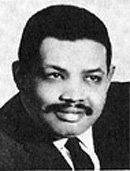
Monday, July 20, 1964
Monday, August 7, 1967
Julian Edwin "Cannonball" Adderley (September 15, 1928 - August 8, 1975) was an American jazz alto saxophonist of the hard bop era of the 1950s and 1960s.
Adderley is perhaps best remembered for the 1966 soul jazz single "Mercy, Mercy, Mercy," which was written for him by his keyboardist Joe Zawinul and became a major crossover hit on the pop charts. A cover version by the Buckinghams also reached #5 on the charts. Adderley worked with Miles Davis, first as a member of the Davis sextet, appearing on the seminal records Milestones (1958) and Kind of Blue (1959), and then on his own 1958 album Somethin' Else. He was the elder brother of jazz trumpeter Nat Adderley, who was a longtime member of his band.
Originally from Tampa, Florida, his nickname derived from "cannibal", a title imposed on him by high school colleagues as a tribute to his voracious appetite.
Louis Armstrong
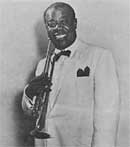
Second week of the season, 1960
Monday, July 31, 1961
Monday, July 9, 1962
Monday, June 24, 1963
Monday, August 17, 1964
Monday, July 12, 1965
Monday, July 4, 1966
From a New Orleans boys' home to Hollywood, Carnegie Hall, and television, the tale of Louis Armstrong's life and triumphant six-decade career epitomizes the American success story. His trumpet playing revolutionized the world of music, and he became one of our century's most recognized and best loved entertainers. In the 1960's, Armstrong spent the final decade of his life in the same way that he had spent the four previous— entertaining audiences throughout the world. In 1971, he died of a heart attack in New York City.
Read a memory about Louis Armstrong by Sharon Nalance DiSlavi
Source: pbs.org/wnet/
Count Basie and his Orchestra
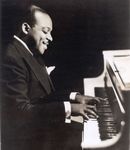
and his Orchestra
Monday, July 16, 1962
Monday, August 17, 1964
Monday, July 5, 1965
Monday, August 30, 1969
Monday, August 24,1970
Count Basie was a leading figure of the swing era in jazz and, alongside Duke Ellington, an outstanding representative of big band style. After studying piano with his mother, as a young man he went to New York, where he met James P. Johnson, Fats Waller (with whom he studied informally), another pianist of the Harlem stride school.
By the end of the 1930s, the Count Basie Orchestra had acquired international fame with such pieces as One o'clock Jump (1937), Jumpin' at the Woodside (1938), and Taxi War Dance (1939). He made the first of many tours of Europe in 1954, visited Japan in 1963, and issued a large number of recordings both under his own name and under the leadership of various singers, most notably Frank Sinatra. In the mid-1970s, a serious illness hampered his career, and in the 1980s he sometimes had to perform from a wheelchair.
Source: pbs.org/
Photo Source: musicians.allaboutjazz.com/
Les Brown and his Orchestra
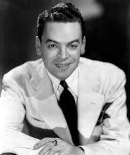
Les Brown and the Band of Renown performed with Bob Hope on radio, stage and television for almost fifty years. They did 18 USO Tours for American troops around the world, and entertained over three million people.
The first film that Brown and the band appeared in was Seven Days' Leave (1942) starring Victor Mature and Lucille Ball. Rock-A-Billy Baby, a low-budget 1957 film, was the Band of Renown's second, and in 1963 they appeared in the Jerry Lewis' comedy The Nutty Professor playing their theme song "Leapfrog."
Brown and the Band were also the house band for The Steve Allen Show (1959 - 1961) and the Dean Martin Show (1965 - 1972). Brown and the band performed with virtually every major performer of their time, including Frank Sinatra, Ella Fitzgerald and Nat King Cole. In 2013 his hometown of Reinerton, PA adopted as the town's official slogan: Reinerton: The Town of Renown in honor of Les and his band.
Les Brown Sr. died of lung cancer in 2001. He was 88 years old.
Dave Brubeck
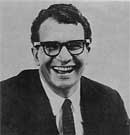
Monday, June 4, 1962
Monday, June 18, 1962
Monday, August 5, 1963
Monday, June 29, 1964
Monday, August 3, 1964
Monday, June 21, 1965
Monday, August 1, 1966
Monday, June 18, 1967
Monday, August 17, 1970
In 1958, the combination of Brubeck with drummer Joe Morello, double bassist Eugene Wright, and alto saxophonist Paul Desmond quickly achieved an overwhelming popular success as the Dave Brubeck Quartet. The Quartet's experimentation with time signatures unusual to jazz produced works like Blue Rondo a la Turk and Take Five, introducing millions of enthusiastic young listeners to unexplored regions of jazz. The group recorded and performed together continuously through 1967.
Dave Brubeck died on December 5, 2012 at age 91.
Source: www.schirmer.com/
The Dukes of Dixieland
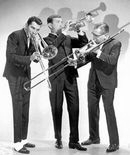
Monday, June 25, 1962
Monday, July 15, 1963
Monday, July 27, 1964
Sunday, July 4, 1965
Jazz in an American tradition celebrated by the Dukes of Dixieland during every performance. The group maintained its preeminent position in its art for four decades and was the oldest continually performing jazz ensemble in New Orleans. From the original group founded in 1949 by the Assunto brothers, trumpet player Frankie and trombonist Freddie, to the current members who keep the sound alive and growing, the group has kept its determination to bring to their audiences the very heart and soul of New Orleans.
Source: www.koger.sc.edu/
Duke Ellington
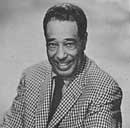
Monday, August 20, 1962
Monday, August 12, 1963
Sunday, July 19, 1964
Monday, July 19, 1965
Monday, July 11, 1966
Sunday, August 14, 1966
Monday, July 1, 1968
Sunday, July 27, 1969
Considered one of the greatest jazz composers of all time, Duke Ellington had an enormous impact on the popular music of the late 20th century. Among his more than two thousand songs are such hits as "In A Sentimental Mood," "Sophisticated Lady," "I Got It Bad And That Ain't Good," and "I'm Beginning To See The Light." For almost fifty years he toured the world as a band leader and piano player. Throughout the 1950s and early 1960s he began performing with a number of the other great musicians and composers of the time, making albums that included DUKE ELLINGTON AND JOHN COLTRANE (1962), MONEY JUNGLE (1962, with Max Roach and Charles Mingus), and DUKE ELLINGTON MEETS COLEMAN HAWKINS.
Maynard Ferguson
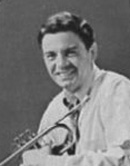
Monday, July 30, 1962
Monday, August 26, 1963
Monday, June 22, 1964
Monday, June 28, 1965
Maynard Ferguson (born May 4, 1928 in Montreal, Quebec) came to prominence playing in Stan Kenton's orchestra at age 16, before forming his own band in 1957. He is noted for being able to play accurately in a remarkably high range.
After leaving the Stan Kenton Orchestra, Ferguson began playing outside North America, with extended periods in England and India, before returning to the U.S. in 1974. His recording of "Gonna Fly Now," the theme from the movie Rocky won him a Grammy nomination in 1978. Ferguson started many of his own big bands, including his fusion band High Voltage and Big Bop Nouveau.
Maynard Ferguson is one of the handful of musician/bandleaders to survive the end of the big band era and Rock and Roll. While never a household name, and with little popular success, excluding "Gonna Fly Now," he demonstrated a remarkable ability to adapt musically. His albums show a progression from big band swing, bepob, cool jazz, latin, jazz/rock, fusion with classical and operatic influences. He enjoyed a remarkable resurgence in the 1970s when he embraced jazz/rock. Though this phase is often derided by jazz purists, it attracted a new generation of young school musicians to jazz.
The economic unviability of large bands in the late 1960s served as an impetus for Ferguson to relocate to Europe and Asia, particularly England and India. Ferguson gained some minor notoriety when in Amsterdam he joined with a group of musicians and artists advocating the use of drugs for mind expanding purposes. This appears to have been a brief dalliance, and in keeping with the mood of the times.
After Maynard Ferguson's return to the U.S. in the 1970s he was able to sustain the big band experience on tour by recruiting talented college musicians. From at least the late 1990s continuing on through at least 2004, Ferguson supported music in secondary schools, often playing in high school auditoriums and conducting master classes. Though touring with a lean band of 10 - 12 musicians, Maynard is a crowd pleaser with dedicated fans. He has been known to keep the band riffing on the final tune while he takes the time to shake the hand of every cheering fan in the audience.
Ella Fitzgerald
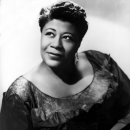
Dubbed "The First Lady of Song," Ella Fitzgerald was the most popular female jazz singer in the United States for more than half a century. In her lifetime, she won 13 Grammy awards and sold over 40 million albums. Her voice was flexible, wide-ranging, accurate and ageless. She could sing sultry ballads, sweet jazz and imitate every instrument in an orchestra.
She worked with all the jazz greats, from Duke Ellington, Count Basie and Nat King Cole, to Frank Sinatra, Dizzy Gillespie and Benny Goodman. (Or rather, some might say all the jazz greats had the pleasure of working with Ella). She performed at top venues all over the world, and packed them to the hilt. Her audiences were as diverse as her vocal range. They were rich and poor, made up of all races, all religions and all nationalities. In fact, many of them had just one binding factor in common - they all loved her.
Pete Fountain
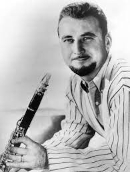
Monday, August 19, 1968
Growing up as the son of a Dixie beer truck driver, Pierre Dewey LaFontaine Jr. first took up the clarinet to strengthen his weak lungs. By 15, he had already turned pro, working several nights a week on Bourbon Street. He quit high school during his senior year—he kept falling asleep in class, and his $150 weekly income already exceeded his teachers' salary—to play music full time.
As a member of the Basin Street Six, his reputation as an especially hot clarinetist grew. In 1957, celebrity bandleader Lawrence Welk offered Fountain a spot in his big band. The straitlaced Welk didn't much care for Fountain's drinking but couldn't deny the mischievous young clarinetist's talent. Even while suffering a hangover, Fountain proudly noted years later, he rose to the challenge whenever Welk called for a solo.
Musical differences and homesickness led to Fountain leaving Welk's employment and moving back to New Orleans in 1959. In 1960, he opened his first nightclub at 800 Bourbon St.
In 1977, the new Hilton Riverside Hotel customized a third-floor space for Fountain. For 26 years, it was Fountain's clubhouse. Stars such as Bob Hope, comedian Don Rickles and "Tonight Show" bandleader Doc Severinsen stopped by to join in the fun.
With his lease at the Hilton set to expire in 2003, he decided to close his nightclub. For his final performance at the Hilton, he shared the stage with a handful of guests and old friends, including Orleans Parish coroner and trumpeter Frank Minyard.
He died August 6, 2016.
The Four Freshmen
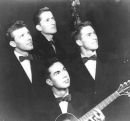
In 1948, four young men created a sound that forever changed the way vocal jazz harmony was heard and performed. Known as The Four Freshmen, the group started with two brothers, Don and Ross Barbour, their cousin Bob Flanigan, and friend Hal Kratzsch. With a soaring, true tenor in Bob Flanigan, the group created a sound that has endured for over 6 decades. Hal Kratzsch sang the bass part and played trumpet. He sang the bass part with a big sound, laying the foundation for the Barbour brothers to add their beautiful inner part stylings. Ross sang the 3rd part and played drums. Don sang the 2nd part and played guitar. Thus, the original Four Freshmen was born and began touring, playing bowling alleys and small clubs across the country.
Early on in their career, the Freshmen met Stan Kenton. He had heard the rumors of a vocal group that sounded like his band. The Freshmen were all fans of Kenton and in many ways, modeled their sound after the Kenton trombone section. Once Kenton heard them, he was hooked. He loved the group and believed in them so much that he approached Capitol and essentially got the Freshmen signed in 1950. This led to a fruitful partnership between Capitol Records and the Freshmen for over 10 years. During the Capitol years, the Freshmen had some of their biggest hits, including their first hit with Capitol called "It's A Blue World."
Erroll Garner
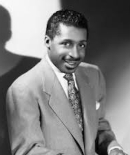
Pittsburgh born Jazz pianist, prolific composer, concert hall artist, and recording star. Garner was one of the most well known and influential pianists in the world during his lifetime. Surrounded by a musical family, Garner was by all accounts self-taught, began playing at the age of three and was performing professionally by the age of seven. Throughout his career Garner developed a distinctive and original piano style often compared with Art Tatum, Fats Waller, as well as Claude Debussy.
Garner released music on over 40 labels, received multiple Grammy nominations, and recorded one of the greatest selling jazz albums of all time, Concert By The Sea. His published catalog contains nearly 200 compositions including "Misty", which was named #15 on ASCAP's list of the top songs of the 20th century. He scored for ballet, film, television, and orchestra. One of the most televised Jazz artists of his era, Garner appeared on TV shows all over the world, including: Ed Sullivan, Dick Cavitt, Steve Allen, Johnny Carson, and many others. His prolific career began on Allegheny riverboats and spanned from the clubs of 52nd street to the top concert halls of the world.
Erroll Garner's musical and cultural legacy is perhaps stronger today than at any point since his untimely passing in 1977, when Erroll lost his battle with lung cancer at the age of 55. Thanks to the renewed efforts of Octave Music—the successor and namesake of the company Garner formed with his manager Martha Glaser in 1952—and it's Erroll Garner Jazz Project, his music is once again finding fresh audiences through a series of new record releases, multimedia performances, and creative partnerships.
Stan Getz
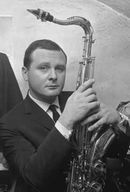
Monday, June 14, 1965
Monday, June 27, 1966
Monday, August 5, 1968
Stanley Gayetsky was born on February 2, 1927 in Philadelphia, Pennsylvania. He joined Stan Kenton's big band in 1944; played with Jimmy Dorsey in 1945; and played with Benny Goodman in 1945 and 1946. He started becoming more popular when he was a part of Woody Herman's Second Herd from 1947 to 1949. He emigrated from the United States and from 1958-1961 lived in semi-retirement in Denmark.
Stan Getz returned to America in 1961. He soon recorded "Focus," an adventurous album (and his personal favorite) that matched his tenor with strings arranged by Eddie Sauter. Then, he got together with Brazilian composer Antonio Carlos Jobim and singers Joao and Astrud Gilberto. This is when he introduced "Desafinado" and helped make bossa nova, a mixture of jazz and samba, more popular. He recorded "The Girl from Ipanema" in 1963, which reached the top of the charts in 1964. His quartet played more straight ahead music beginning in 1964.
Source: duke.edu/
Photo Source: freddywarren.pwp.blueyonder.co.uk/
Dizzy Gillespie
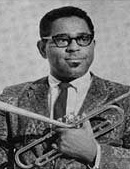
Monday, August 15, 1966
Dizzy Gillespie (1917-1993) was an American trumpet player, composer, and bandleader. With Charlie Parker and Thelonious Monk, he cofounded the bebop or bop jazz movement. This movement revitalized the harmonic, melodic, and rhythmic character of jazz. Gillespie pioneered in the development of Afro-Cuban jazz, which combines bop improvisations with Latin rhythms. Many of his compositions are jazz standards, including "A Night in Tunisia," "Groovin' High," "Con Alma," "Salt Peanuts," "Blue 'n Boogie," "Woody 'n You," and "Birks Works."
Gillespie was born in Cheraw, South Carolina. His full name was John Birks Gillespie. From 1937 to 1944, he played in the big bands of Cab Calloway, Earl Hines, Billy Eckstine, and others. Gillespie was a leading figure in the small groups that helped develop bop in the early 1940's. In 1946, Gillespie formed a big band. His original style and brilliant technique established him as a vital new force in music. In 1956, his band was the first to be sponsored on an international tour by the United States Department of State.
Source: www2.worldbook.com/
Bobby Hackett
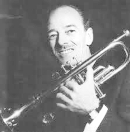
Robert Leo Hackett: born Jan. 31, 1915 in Providence, RI; died June 7, 1976 in Chatham, MA
Hackett quit school at 14. His first playing jobs were on guitar and violin. In the early 1930s, Bobby worked with Payson Re's dance band on Cape Cod, and Billy Lossez's hotel orchestra. Played with Pee Wee Russell and Teddy Roy in Boston in the mid 1930s, and led the band at the Theatrical Club in that city 1936-37. Moved to New York in 1937, playing with Joe Marsala and Eddie Condon, as well as leading his own group on 52nd street. In 1939, he formed his own big band, but it was not successful.
Joined Horace Heidt band and, after a year, Glenn Miller, playing guitar and cornet. Recorded famous solo on Jerry Gray's "String of Pearls." He was later a member of the Casa Loma Orchestra in 1944-46, and the Benny Goodman Orchestra in 1962-63.
He worked in studio orchestras at both NBC and ABC, and became known for his solos with the Jackie Gleason Orchestra 1953-55. He toured with Tony Bennett in the mid 1950s, and was later a member of the Benny Goodman Orchestra in 1962-63.
After moving to Cape Cod in 1971, Hackett played locally with McKenna, and toured with George Wein and Benny Goodman.
Lionel Hampton
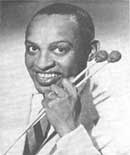
There is some confusion about the year of Lionel Hampton's birth, which has sometimes been given as 1908. Around 1916 he moved with his family to Chicago, where he began his career playing drums in various lesser bands. In the late 1920s he was based in Culver City, California, where he worked in clubs and took part in several recording sessions (1930) with Louis Armstrong, who encouraged him to take up vibraphone. Hampton soon became the leading jazz performer on this instrument, and achieved wide recognition through his many film appearances with Les Hite's band. After playing informally with Benny Goodman in 1936 he began to work in Goodman's small ensembles, with which he performed and recorded regularly until 1940; as a result he became one of the most celebrated figures of the swing period, and his resounding success allowed his to form his own big band in 1940.
Hampton performed in the Royal Festival Hall, London, in 1957, and played at the White House for President Carter in 1978; during the same year he formed his own record label, Who's Who in Jazz, to issue mainstream recordings. In the mid 1980s his band continued to draw capacity crowds throughout the world. Hampton was honored as alumnus of the year by the University of Southern California in 1983.
Hampton was not the first jazz musician to take up vibraphone (Red Norvo had preceded him in the late 1920s), but it was he who gave the instrument an identity in jazz, applying a wide range of attacks and generating remarkable swing on an instrument otherwise known for its bland, disembodied sound. Undoubtedly his best work was done with the Goodman Quartet from 1936-1940, when he revealed a fine ear for small-ensemble improvisation and an unrestrained, ebullient manner as a soloist. The big band format was probably better suited to the display of his flamboyant personality and flair for showmanship, but after a few early successes, especially the riff tunes Flying Home, Down Home Jump, and Hey Bab-Ba-Rebop, the group was too often content to repeat former triumphs for its many admirers. Hampton has at times also appeared as a singer, played drums with enormous vitality, and performed with curious success as a pianist, using only two fingers in the manner of vibraphone mallets.
Source: pbs.org/jazz/
Woody Herman
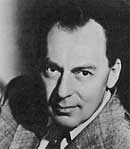
Monday, August 30, 1965
In 1943 the Woody Herman Orchestra was becoming the Herd. This band was later renamed the First Herd. Duke Ellington influenced Herman's band during this period. In 1959 he organized his 4th "Herd Band," the Thundering Herd. The band was a success through the 1960s. He toured with them throughout the 1970s and 1980s.
Source: music.duke.edu/jazz_archive/
Al Hirt
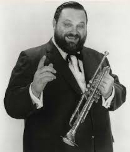
Alois Maxwell "Al" Hirt (New Orleans, November 7, 1922 - April 27, 1999) was an American trumpeter and bandleader.[1] He is best remembered for his million-selling recordings of "Java" and the accompanying album Honey in the Horn (1963), and for the theme music to "The Green Hornet." Hirt was inducted into The Louisiana Music Hall of Fame in November 2009.
At the age of six, he was given his first trumpet, and by the age of 16, Hirt was playing professionally, often with his friend Pete Fountain. In 1940, Hirt went to Cincinnati, Ohio, to study at the Cincinnati Conservatory of Music with Dr. Frank Simon. After a stint as a bugler in the United States Army during World War II, Hirt performed with various swing big bands, including those of Tommy Dorsey, Jimmy Dorsey, Benny Goodman, and Ina Ray Hutton.
Hirt's Top 40 charted hit "Sugar Lips" in 1964 would be later used as the theme song for the NBC daytime game show Eye Guess, hosted by Bill Cullen and originally airing from January 1966 to September 1969.
In 1962 Hirt opened his own club on Bourbon Street in the French Quarter, which he ran until 1983. He also became a minority owner in the NFL expansion New Orleans Saints in 1967.. He also appeared opposite Troy Donahue and Suzanne Pleshette in the 1962 motion picture, Rome Adventure.
Ahmad Jamal
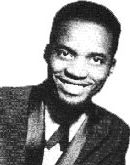
Monday, July 26, 1965
Born in Pittsburgh, PA in 1930, Ahmad Jamal's given name was Frederick Jones but upon converting to Islam around 1952 he began using Ahmad Jamal. He started playing the piano at the age of three and became interested in jazz during the bop era. He began playing professionally at 18 and shortly thereafter came to the attention of Miles Davis, who cited Jamal as an important influence. In 1951 he formed his first trio; he continued to create a uniquely orchestral sound, defining the jazz trio for some 50 years. In 1958 he and his group recorded Ahmad Jamal at the Pershing, featuring the song "Poinciana," which became his signature tune. Jamal has been acclaimed for his cool post-bop style, melodic and rhythmic improvisations, dramatic pacing, dynamic effects, innovative small-ensemble arrangements, and use of musical space.
Jimmy Jones
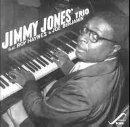
James Henry Jones (December 30, 1918, Memphis, Tennessee - April 29, 1982, Burbank, California) was an American jazz pianist and arranger. As a child, Jones learned guitar and piano. He worked in Chicago orchestras from 1936 and played in a trio with Stuff Smith from 1943 to 1945. Following this, he played with Don Byas, Dizzy Gillespie (1945), J.C. Heard (1945-47), Buck Clayton (1946) and Etta Jones. He accompanied Sarah Vaughan from 1947 to 1952 and then again from 1954 to 1957 after a long illness. In 1954, he played on an album with Clifford Brown and accompanied him on his European tour. Around this time, he also played with Helen Merrill and Gil Evans. In 1959, he accompanied Anita O'Day in her appearance at the Newport Jazz Festival and worked with Dakota Staton, Pat Suzuki, and Morgana King.
As a pianist and arranger in New York City, he worked in the 1960s with Harry Belafonte, Johnny Hodges, Budd Johnson, Nat Gonella, and Clark Terry. He accompanied Chris Connor on her version of "Where Flamingoes Fly" and sat in with Duke Ellington's Orchestra for some collaborations with Ella Fitzgerald. Jones did a set with his trio (Jimmy Hughart and Grady Tate) at the Antibes Jazz Festival in 1966, and the following year toured with Jazz at the Philharmonic. In the 1970s, he worked with Kenny Burrell and Cannonball Adderley.
In the course of his career, Jones played piano on recordings by Harry Sweets Edison, Ben Webster, Big Joe Turner, Coleman Hawkins, Frank Wess, Milt Jackson, Sidney Bechet, Sonny Rollins, Sonny Stitt, and Thad Jones and worked as an arranger for Wes Montgomery, Nancy Wilson, Sandler and Young, Shirley Horn, Joe Williams, Billy Taylor, and Chris Connor.
Dave Brubeck cited Jones as an influence and said of him: "He didn't like to solo. Harmonically, though, he was one of the greatest players I ever heard."
The J. J. Johnson Sextette
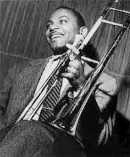
Often referred to as the "Charlie Parker of the trombone" due to his uncanny musical dexterity and fluency, James Louis "J.J." Johnson dominated his instrument for more than 40 years, and was known as a potent composer and arranger. He was a perennial jazz magazine poll winner for his peerless trombone playing.
Between ages nine and 11, he studied piano with his family's church organist, picking up the trombone at age 14. His first professional experience came with the bands of Clarence Love and Snookum Russell. He spent three years with Benny Carter's band, then gigged with Count Basie in 1945-46. He worked briefly with Dizzy Gillespie and Woody Herman, then toured the Far East with Oscar Pettiford. The difficulty of making a living in the jazz field affected Johnson; from 1952-54 he held a day job as a blueprint reader.
In the late 1950s, he began to gain recognition as a composer. Two of his extended works, "El Camino Real" and "Sketch for Trombone and Orchestra," were commissioned by the Monterey Jazz Festival. In addition to his work as a composer, he performed with groups led by Miles Davis, Clark Terry, and Sonny Stitt, then moved to California in 1970. There he immersed himself in lucrative television and film scoring. His scores can be heard on such television programs as Mayberry RFD, That Girl, Mod Squad, Six Million Dollar Man, and Starsky and Hutch.
In 1987, he returned to his hometown Indianapolis and began playing, touring, and recording again. His awards include an honorary doctoral degree from Indiana University and the Indiana Governor's Arts Award in 1989.
Stan Kenton
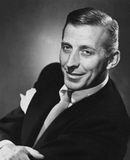
Monday, July 8, 1963
Monday, August 23, 1965
Monday, July 18, 1966
Wednesday-Thursday, June 7-8, 1967
Friday, July 24, 1970
Stanley Newcomb Kenton was born in Wichita, Kansas, on December 15, 1911, and grew up in Los Angeles, California. After graduating from high school, he played in several small groups in Los Angeles, San Diego, and Las Vegas. He studied piano and composition, first with his mother, Stella, who sparked his profound interest in the impressionists; then with Frank Hurst, a theater organist; and with Earl "Fatha" Hines, whose piano lessons were often conducted in Hines's hotel room, using a cane-backed chair with a Masonite seat for a keyboard (both had good enough sense of pitch that they didn't need the actual piano).
In 1933 Everett Hoagland offered Stan the piano chair in his band, which played at the Rendezvous Ballroom in Balboa Beach, California, and whose book included charts by another youngster, Gil Evans. Hoagland, realizing audiences would respond more lucratively to a society band sound than to his current progressive sound, changed course and went on the road. Stan stayed behind with Hoagland's successor, Russ Plummer.
Kenton's bands, or orchestras, as he preferred to present them to the public (privately, they were always "The Band"), produced a string of alumni whose influence on jazz is incalculable, from folks everyone knows as alumni (June Christy, Gerry Mulligan, Lee Konitz, Maynard Ferguson, Kai Winding) to folks who you'd never associate with Stan Kenton's music (Stan Getz and Laurindo Almeida).
It's significant that Stan's music is found in the jazz section, and not the "big band" section of most record shops even today. By constantly pushing audiences to accept more challenging music, and by hiring the very best musicians and pushing them even harder, Kenton made it clear that his heart was always in the future of jazz, not in its nostalgic past. And in the process, he reaffirmed something too few musical directors, from rock through classical music, understand: audiences like good music.
With only the occasional years off to regain his health or his bankroll, or when he became fed up with the state of music (declaring at one point "Jazz is dead") and the 12 months when his final illness forced him to disband his orchestra for good, Stan kept a band on the road, pursuing and largely attaining his artistic visions, until his passing on August 25, 1979.
Source: kenton.crispen.org/
Photo Source: www.mamajazz.org/
Gene Krupa
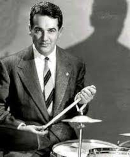
Eugene Bertram Krupa (January 15, 1909 - October 16, 1973) was an American jazz drummer, band leader and composer known for his energetic style and showmanship. His drum solo on "Sing, Sing, Sing" (1937) elevated the role of the drummer from an accompanying line to an important solo voice in the band.
He appeared regularly in the Jazz at the Philharmonic concerts. In the 1950s, Krupa appeared in the films The Glenn Miller Story and The Benny Goodman Story. In 1959, the movie biography The Gene Krupa Story was released; Sal Mineo portrayed Krupa, and the film included cameos by Anita O'Day and Red Nichols. During the 1950s and 1960s, Krupa often played at the Metropole near Times Square in Manhattan. He continued to perform in famous clubs in the 1960s, including the Showboat Lounge in northwest Washington, D.C. With peer Cozy Cole, Gene started a music school in 1954 that carried on into the 1960s. Krupa was still very busy in the early 1970s until shortly before his death.
In collaboration with the Slingerland drum and Zildjian cymbal manufacturers, he was a major force in defining the standard band drummer's kit. Krupa is considered "the founding father of the modern drumset" by Modern Drummer magazine.
Ramsey Lewis
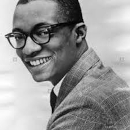
Monday, June 20, 1966
June 2-3, 1967
Monday, July 22, 1968
Monday, July 21, 1969
Ramsey Emmanuel Lewis Jr. (born May 27, 1935) is an American jazz composer, pianist and radio personality. Lewis has recorded over 80 albums and has received five gold records and three Grammy Awards so far in his career. He began taking piano lessons at the age of four. Lewis would eventually join a jazz group called the clefs. He later formed the Ramsey Lewis Trio with drummer Isaac "Red" Holt and bassist Eldee Young.
During 1956 the trio issued their debut album, Ramsey Lewis and his Gentle-men of Swing. Following their 1965 hit "The In Crowd" (the single reached No. 5 on the pop charts, and the album No. 2) they concentrated more on pop material.
Lewis earned his first gold record, as well as a Grammy award for Best Jazz Performance, for their swinging version of Dobie Gray's hit "The In Crowd." He returned to the pop charts in 1966 with versions of "Hang On Sloopy" and "Wade In The Water."
Source: Source: ramseylewis.com/
Source: Source: wikipedia.org/
Guy Lombardo
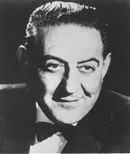
Gaetano Alberto "Guy" Lombardo (June 19, 1902 - November 5, 1977) was a Canadian bandleader and violinist. With his three brothers Carmen, Lebert and Victor and other musicians from his hometown of London, Ontario he formed the jazz band The Royal Canadians in 1924. The band played at the Roosevelt Hotel in New York City from 1929 to 1959, and their New Year's Eve broadcasts (which continued until 1976 at the Waldorf Astoria) were a major part of New Year's celebrations across North America. In 1938, he became a naturalized citizen of the United States. They were noted for playing the traditional song Auld Lang Syne as part of the celebrations. Their recording of the song still plays as the first song of the new year in Times Square.
Guy Lombardo was also an important figure in hydroplane racing, winning the Gold Cup in 1946 and the Ford Memorial competition in 1948. A museum in London is dedicated to his musical and hydroplane racing achievements. The museum is located near Wonderland Gardens, a venue closely associated with Lombardo and the Royal Canadians.
Source: wikipedia.org/
Photo Source: nfo.net/usa/guylomb.jpg
Hugh Masekela
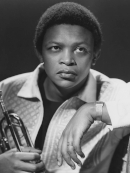
Hugh Masekela was one of the world's finest and most distinctive horn players, whose performing on trumpet and flugelhorn mixed jazz with South African styles and music from across the African continent and diaspora. Exiled from his country for 30 years, he was also a powerful singer and songwriter and an angry political voice, using his music and live performances to attack the apartheid regime that had banished him from his homeland.
He was born in Kwa-Guqa township, Witbank, a coal mining settlement near Johannesburg. His father, Thomas, was a health inspector and sculptor, and his mother, Pauline (nee Bowers), was a social worker, officially classified as "coloured" in apartheid-era South Africa as she had a Scottish father.
Hugh was given his own instrument when he was 14. He was then a pupil at St Peter's, a remarkable secondary school for black children that became a centre for opponents of apartheid before being closed by the authorities. Masekela had wanted a trumpet, he said, after seeing the 1950 film Young Man With a Horn, and recalled that he told the priest: "If I can get a trumpet I won't bother anyone one any more."
Masekela's skills as a trumpeter increased and so did his fame. In the 1950s he played at fundraising events for the ANC in the years before it was banned, with Mandela among those who came to watch. He explored South African styles and avidly followed developments in the American jazz scene as he developed his distinctive Afro-jazz sound.
He travelled first to London, where he was disappointed by the jazz scene, and then to New York, where, like Makeba, he was helped by the musician and activist Harry Belafonte. Masekela enrolled at the Manhattan School of Music and immersed himself in the city's jazz scene, watching Miles Davis, John Coltrane and Thelonious Monk.
In 1967, now living in California and having divorced Makeba after only two years of marriage, he played at the Monterey festival alongside Janis Joplin and the Who. The following year he released the single Grazing in the Grass, a massive hit, topping the US charts for three weeks.
He returned to Africa with Levine in 1974, when they put together the Zaire 74 concerts that preceded the Rumble in the Jungle boxing match in Kinshasa between Muhammad Ali and George Foreman. In 1987 he and Makeba joined Paul Simon on the world tour promoting Simon's massively successful album Graceland, which had been partly recorded with black musicians in South Africa, despite a UN cultural boycott.
Having issued more than 40 albums across his career, his final one was No Borders, in 2016. Among his many awards was South Africa's highest, the Order of Ikhamanga. Hugh Ramapolo Masekela, musician and activist, born 4 April 1939; died 23 January 2018
The Modern Jazz Quartet
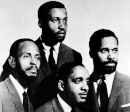
Monday, September 16, 1963
The Modern Jazz Quartet was a jazz combo established in 1952 that played music influenced by classical, cool jazz, blues and bebop. For most of its history the Quartet consisted of John Lewis (piano), Milt Jackson (vibraphone), Percy Heath (double bass), and Connie Kay (drums). The group grew out of the rhythm section of Dizzy Gillespie's big band from 1946 to 1948, which consisted of Lewis and Jackson along with bassist Ray Brown and drummer Kenny Clarke. They recorded as the Milt Jackson Quartet in 1951 and Brown left the group, being replaced on bass by Heath. During the early-to-mid-1950s they became the Modern Jazz Quartet, Lewis became the group's musical director, and they made several recordings with Prestige Records, including the original versions of their two best-known compositions, Lewis's "Django" and Jackson's "Bags' Groove". Clarke left the group in 1955 and was replaced as drummer by Connie Kay, and in 1956 they moved to Atlantic Records and made their first tour to Europe.
Under Lewis's direction, they carved their own niche by specializing in elegant, restrained music that used sophisticated counterpoint inspired by baroque music, yet nonetheless retained a strong blues feel. Noted for their elegant presentation, they were one of the first small jazz combos to perform in concert halls rather than nightclubs. They were initially active into the 1970s until Jackson quit in 1974 due to frustration with their finances and touring schedule, but re-formed in 1981. They made their last released recordings in 1992 and 1993, by which time Kay had been having health issues and Mickey Roker had been his replacement drummer while Kay was unavailable. After Kay's death in 1994, the group operated on a semi-active basis, with Percy Heath's brother Albert Heath on drums until the group disbanded permanently in 1997.
Wes Montgomery
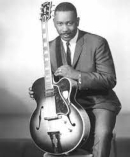
John Leslie "Wes" Montgomery is the most influential bebop guitarist of past and present times. Basically, he's the one that changed both the mentality of players that followed AND the way the instrument is played. It's hard to hear anything "Jazz Guitar" and not associate with a hint of Wes Montgomery behind it! He came right after Charlie Christian and he's considered by many to be the logical sequel in jazz guitar history.
Wes was in fact very much inspired and influenced by Christian's playing. It is said that early on, Wes was actually hired to play Christian's solos during live concerts! He learned them all (by ear... Wes was not a reader) to the point that the vinyls started to disintegrate. That's the spirit! (-:
In the end, both Montgomery and Christian contributed to the then new bebop language with great tones, rhythms, dexterity and soulfulness. Wes always had fresh, surprising melodic ideas as well a great chops. He never read a single note on paper but his ears and heart guided him dearly. Watch him on video, you'll understand!
Wes Montgomery is now part of this great tradition and still has an influence on young jazz guitarists. His music is worth studying carefully. Most (if not all) jazz guitarists that came after cite Wes as an influence. It's hard not to...
Oscar Peterson
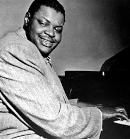
Oscar Emmanuel Peterson, (August 15, 1925 - December 23, 2007) was a Canadian jazz pianist, virtuoso and composer. He was called the "Maharaja of the keyboard" by Duke Ellington, simply "O.P." by his friends, and informally in the jazz community as "the King of inside swing". He released over 200 recordings, won seven Grammy Awards, as well as a lifetime achievement award from the Recording Academy, and received numerous other awards and honors. He is considered one of history's great jazz pianists, and played thousands of concerts worldwide in a career lasting more than 60 years.
During the 1960s and 1970s Peterson made numerous trio recordings highlighting his piano performances; they reveal more of his eclectic style, absorbing influences from various genres of jazz, popular, and classical music. According to pianist and educator Mark Eisenman, some of Peterson's best playing was as an understated accompanist to singer Ella Fitzgerald and trumpeter Roy Eldridge.
Buddy Rich
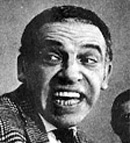
Monday, July 28, 1969
Monday, August 10, 1970
Bernard "Buddy" Rich (September 30, 1917 - April 2, 1987) was an American jazz drummer and bandleader. He is considered one of the most influential drummers of all time.
Rich was born and raised in Brooklyn, New York. He discovered his affinity for jazz music at a young age and began drumming at the age of 2. He began playing jazz in 1937, working with acts such as Tommy Dorsey, Count Basie, and Harry James. From 1942 to 1944, Rich served in the U.S. Marines. From 1945 to 1948, he led the Buddy Rich Orchestra. In 1966, he recorded a big-band style arrangement of songs from West Side Story. He found lasting success in 1966[citation needed] with the formation of the Buddy Rich Big Band, also billed as the Buddy Rich Band and The Big Band Machine.
Rich was known for his virtuoso technique, power, and speed. He was an advocate of the traditional grip, though he occasionally used match grip when playing the toms. Despite his commercial success and musical talent, Rich never learned how to read sheet music, preferring to listen to drum parts and play them from memory.
From 1966 until his death, he led successful big bands in an era when their popularity had waned. He continued to play clubs but stated in interviews that the majority of his band's performances were at high schools, colleges, and universities rather than clubs. He was a session drummer for many recordings, where his playing was often less prominent than in his big-band performances. Especially notable were sessions for Ella Fitzgerald and Louis Armstrong, and the Oscar Peterson trio with bassist Ray Brown and guitarist Herb Ellis.
Rich was notoriously short-tempered. Singer Dusty Springfield slapped him after several days of "putting up with Rich's insults and show-biz sabotage". He held a rivalry with Frank Sinatra which sometimes ended in brawls when both were members of Tommy Dorsey's band. Nevertheless, they remained lifelong friends, and Sinatra delivered a eulogy at Rich's funeral in 1987.
Jimmy Smith
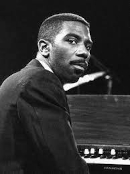
Jimmy Smith ruled the Hammond organ in the 1950s and 1960s. He revolutionized the instrument, showing it could be creatively used in a jazz context and popularized in the process. His Blue Note sessions from 1956 to 1963 were extremely influential and many, like 1960s Back at the Chicken Shack and 1958's The Sermon, are classics.
Smith initially learned piano both from his parents and on his own. He attended the Hamilton School of Music in 1948, and Ornstein School of Music in 1949 and 1950 in Philadelphia. Smith began playing the Hammond in 1951, and soon earned a great reputation that followed him to New York, where he debuted at the Café Bohemia. A Birdland date and 1957 Newport Jazz Festival appearance launched Smith's career.
His 1970s output was quite spotty, though Smith didn't stop touring, visiting Israel and Europe in 1974 and 1975. He and his wife opened a club in Los Angeles in the mid-1970s. Smith resumed touring in the early 1980s and continued wowing audiences around the world. He re-signed with Blue Note in 1985, and has done more representative dates for them and Milestone in the 1990s. He remained a fixture in both small jazz clubs and large festivals until his untimely passing in February of 2005.
The Village Stompers
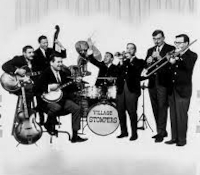
The Village Stompers was an American dixieland jazz group during the 1950s and '60s. The group developed a folk-dixie style that began with the hit song "Washington Square."
The Village Stompers came from Greenwich Village in New York City and consisted of Dick Brady, Don Coates, Ralph Casale, Frank Hubbell, Lenny Pogan, Al McManus, Mitchell May, and Joe Muranyi. Their song "Washington Square" reached No. 2 on the Billboard magazine Hot 100 singles chart in 1963, and No. 1 on the Adult Contemporary Chart.
Their hits included "From Russia with Love"/"The Bridge of Budapest" in April 1964 (No. 81) and "Fiddler on the Roof"/"Moonlight on the Ganges" in December 1964 (No. 97) and No. 19 on the Adult Contemporary Chart. Three other tracks made the Billboard Bubbling Under chart: "The La-Dee-Song"/"Blue Grass" February 1964 (104), "Oh! Marie"/ "Limehouse Blues" in October 1964 (132), and "Those Magnificent Men in Their Flying Machines"/"Sweet Water Bay" in July 1965 (130 pop chart and 35 Adult Contemporary).
Sarah Vaughan
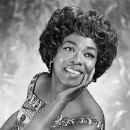
The power, range, and flexibility of her voice made Sarah Vaughan, known as "Sassy" or "The Divine One," one of the great singers in jazz. With her rich, controlled tone and vibrato, she could create astounding performances on jazz standards, often adding bop-oriented phrasing. Along with Billie Holiday and Ella Fitzgerald, Vaughan helped popularize the art of jazz singing, influencing generations of vocalists following her.
Vaughan began singing at the Mt. Zion Baptist Church in her native Newark, and started extensive piano lessons at age seven. Winner of the amateur contest at the Apollo Theatre, Vaughan was hired by Earl Hines for his big band as a second pianist and singer on the recommendation of Billy Eckstine in 1943. She joined Eckstine's band in 1944, as well as making her first recording under her own name.
Her first husband, trumpeter-bandleader George Treadwell, helped re-make her "look" and she began to work and record more regularly, starting in 1949 with Columbia Records. In the 1960s, Vaughan made records with bandleaders such as Count Basie, Benny Carter, Frank Foster, and Quincy Jones. It was during this time that her level of international recognition began to grow as she toured widely, generally accompanied by a trio, and on occasion doing orchestra dates.
These large ensemble dates ranged from the Boston Pops to the Cleveland Orchestra as her voice became recognized as one of the most beautiful and versatile in all of jazz, blessed with a range that literally went from baritone to soprano. In the 1970s and 1980s, her voice darkened, providing a deeper and all the more alluring tone.
Paul Whiteman and his Band
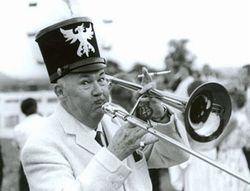
Paul Whiteman, popularly known as "Pops" and the "King of Jazz," was one of the most successful and influential bandleaders of the 1920s and 1930s. After playing the viola for the Denver and San Francisco symphonies, young Whiteman turned to popular music, applying his knowledge of orchestral music to jazz. He was the first bandleader to arrange jazz music instrumentally, as well as the first to feature vocalists, including female soloists.
Beginning with his "Experiment in Modern Music" concert in 1924, when he debuted George Gershwin's "Rhapsody in Blue," Whiteman made jazz respectable. Extremely popular and versatile, Whiteman and his orchestra played not only at prestigious concert halls, but also for private parties, especially those of the rich and famous. Whiteman was also involved in other entertainment media, performing on radio and television programs, appearing in films, providing music for Broadway musicals, and producing many record albums.
Source: www.michenerartmuseum.org/
Photo Source: Jack Rosen, rosenphotos.com/
Nancy Wilson
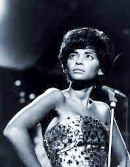
Nancy Sue Wilson (February 20, 1937 - December 13, 2018) was an American singer and actress whose career spanned over five decades, from the mid-1950s until her retirement in the early 2010s. Wilson recorded more than 70 albums and won three Grammy Awards for her work. During her performing career, Wilson was labeled a singer of blues, jazz, R&B, pop, and soul; a "consummate actress"; and "the complete entertainer." The title she preferred, however, was "song stylist".
When Wilson met Julian "Cannonball" Adderley, he suggested she move to New York City for career opportunities. Within four weeks of her arrival in New York she got her first big break, a call to fill in for Irene Reid at "The Blue Morocco". John Levy sent demos of "Guess Who I Saw Today", "Sometimes I'm Happy", and two other songs to Capitol. Capitol Records signed her in 1960.
Wilson's debut single, "Guess Who I Saw Today", was so successful that between April 1960 and July 1962 Capitol Records released five Nancy Wilson albums. Between March 1964 and June 1965, four of Wilson's albums hit the Top 10 on Billboard's Top LPs chart. In 1963, "Tell Me The Truth" became her first truly major hit, leading up to her performance at the Coconut Grove in 1964—the turning point of her career, garnering critical acclaim from coast to coast.
After making numerous television guest appearances, Wilson eventually got her own series on NBC, The Nancy Wilson Show (1967 - 1968), which won an Emmy.
Source: Source: wikipedia.org/
Young Holt Unlimited
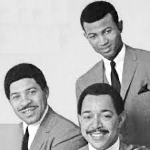
Young-Holt Unlimited (also known as Young-Holt Trio), were a U.S. soul and jazz instrumental musical ensemble from Chicago, IL. Drummer Isaac "Redd" Holt and bassist Eldee Young, formerly members of Ramsey Lewis' jazz trio, formed a new outfit called the Young-Holt Trio with pianist Don Walker in 1966. They met with modest success, including the minor hit "Wack-Wack," which charted at number 40 on the Billboard Hot 100.
In 1968, the group renamed itself Young-Holt Unlimited, and replaced Walker with Ken Chaney. Under their new name, the group scored a number three Hot 100 hit with "Soulful Strut," the backing instrumental track from Barbara Acklin's "Am I the Same Girl." "Soulful Strut" sold a million copies with the gold record awarded by the RIAA in January 1969, less than 3 months after the track's release. Follow-up releases failed to match the commercial success of "Soulful Strut," and the group disbanded by 1974, with Young and Holt continuing to play in Chicago small bands.
Young died of a heart attack on February 12, 2007, in Bangkok, Thailand, at the age of 71.
Source: Source: wikipedia.org/